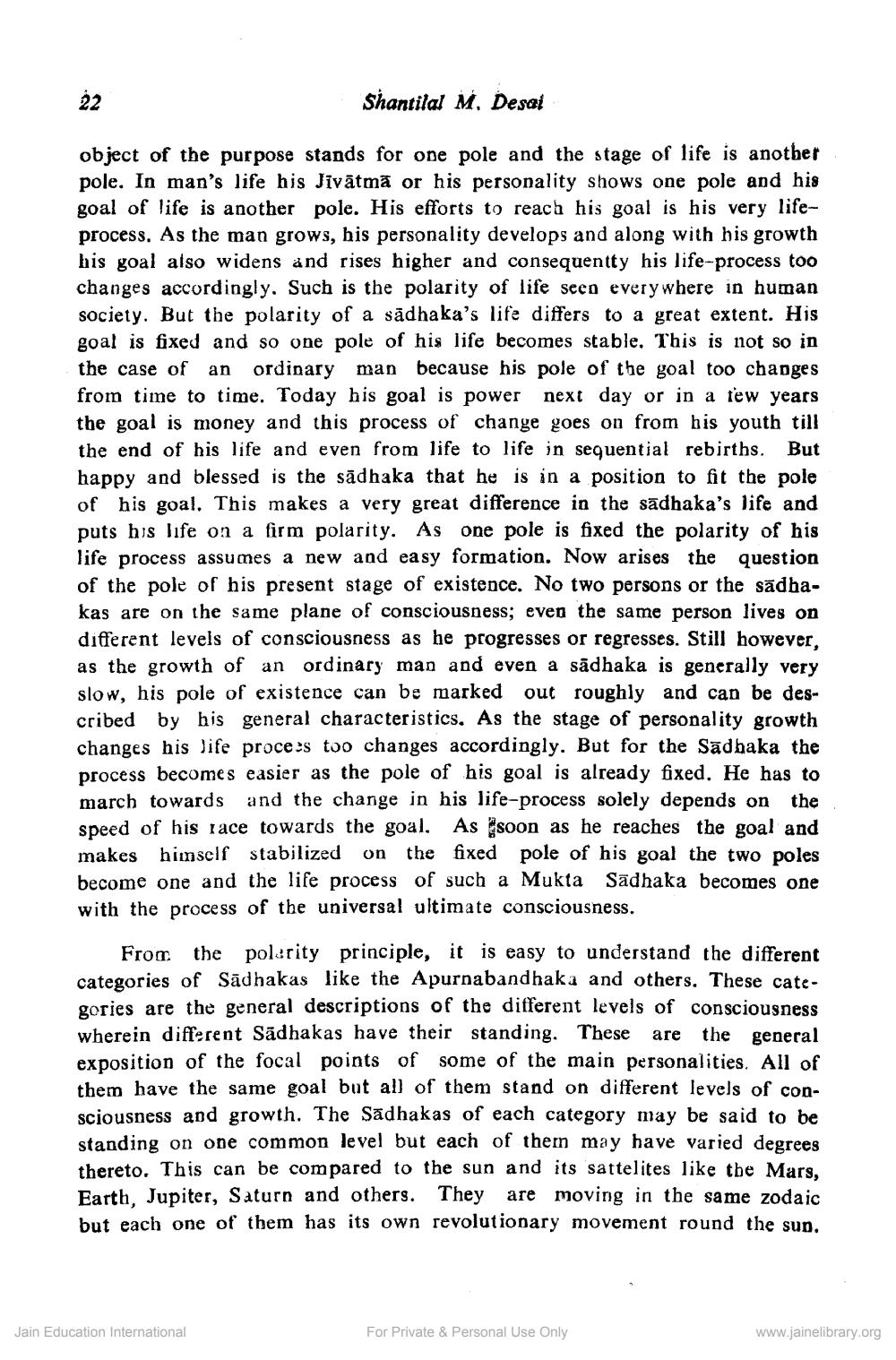________________
Shantilal M, Desai
object of the purpose stands for one pole and the stage of life is another pole. In man's life his Jivātmā or his personality shows one pole and his goal of life is another pole. His efforts to reach his goal is his very lifeprocess. As the man grows, his personality develops and along with his growth his goal also widens and rises higher and consequentty his life-process too changes accordingly. Such is the polarity of life seeo everywhere in human society. But the polarity of a sādhaka's life differs to a great extent. His goal is fixed and so one pole of his life becomes stable. This is not so in the case of an ordinary man because his pole of the goal too changes from time to time. Today his goal is power next day or in a few years the goal is money and this process of change goes on from his youth till the end of his life and even from life to life in sequential rebirths. But happy and blessed is the sādhaka that he is in a position to fit the pole of his goal. This makes a very great difference in the sādhaka's life and puts his life on a firm polarity. As one pole is fixed the polarity of his life process assumes a new and easy formation. Now arises the question of the pole of his present stage of existence. No two persons or the sādhakas are on the same plane of consciousness; even the same person lives on different levels of consciousness as he progresses or regresses. Still however, as the growth of an ordinary man and even a sadhaka is generally very slow, his pole of existence can be marked out roughly and can be described by his general characteristics. As the stage of personality growth changes his life proces too changes accordingly. But for the Sādbaka the process becomes easier as the pole of his goal is already fixed. He has to march towards and the change in his life-process solely depends on the speed of his race towards the goal. As soon as he reaches the goal and makes himself stabilized on the fixed pole of his goal the two poles become one and the life process of such a Mukta Sadhaka becomes one with the process of the universal ultimate consciousness.
From the polurity principle, it is easy to understand the different categories of Sādhakas like the Apurnabandhaka and others. These categories are the general descriptions of the different levels of consciousness wherein different Sadhakas have their standing. These are the general exposition of the focal points of some of the main personalities. All of them have the same goal but all of them stand on different levels of consciousness and growth. The Sadhakas of each category may be said to be standing on one common level but each of them may have varied degrees thereto. This can be compared to the sun and its sattelites like the Mars. Farth Jupiter, Saturn and others. They are moving in the same zodaic but each one of them has its own revolutionary movement round the sun.
Jain Education International
For Private & Personal Use Only
www.jainelibrary.org




